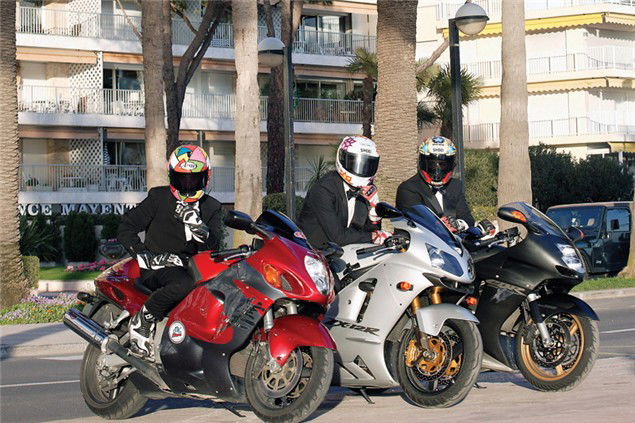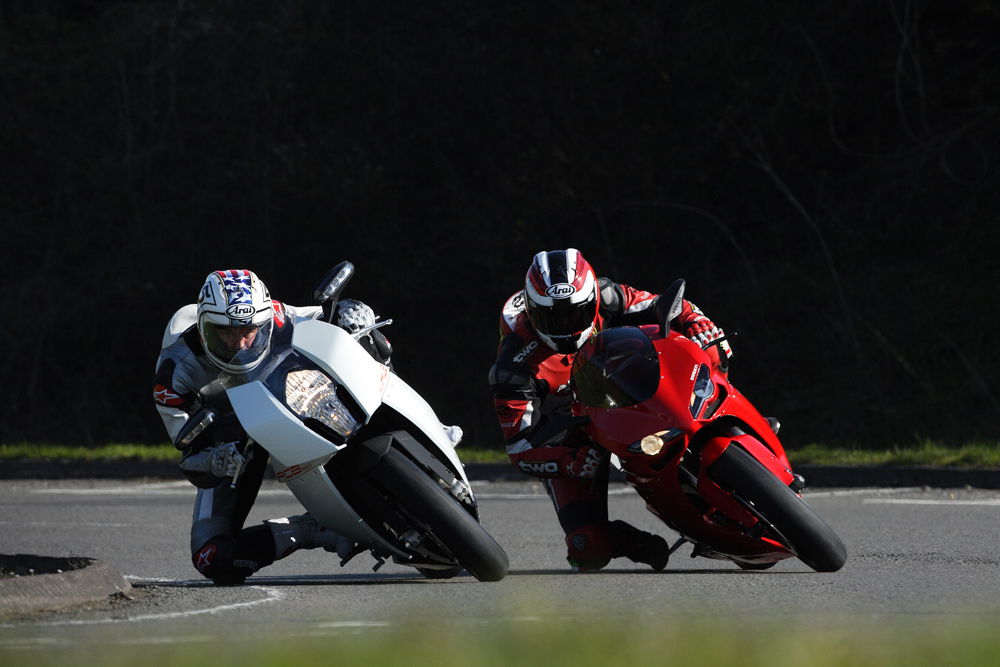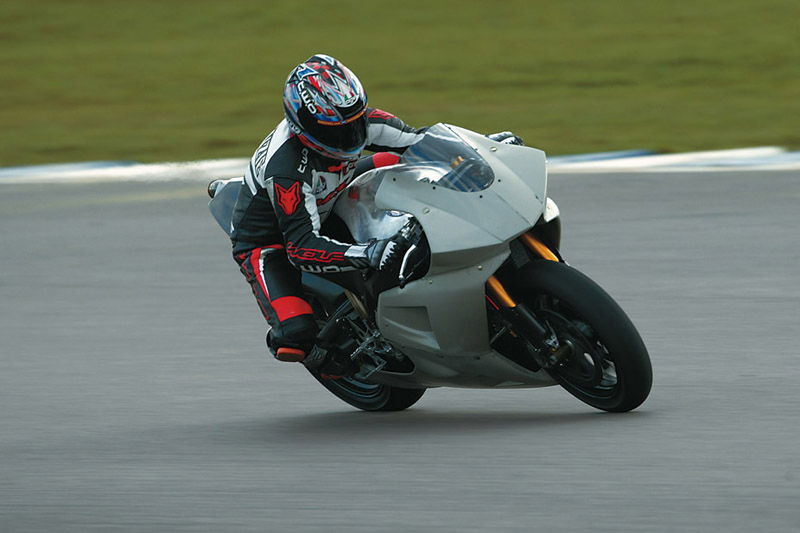To Cannes on a Hayabusa, Blackbird & ZX-12R
Wozza, Gus and Tim head from London to Cannes in time for cocktails, so make it as fast as possible please, by Hayabusa, Blackbird and ZX-12R


It's pitch dark and my eyes, already shot from the last flat-out 700 miles and the weekend that preceded them, are straining through the inky blackness of the twisting, winding autoroute ahead to the small red dot that is Gus' tail-light.
It heads upwards then disappears left and out of sight. There must be a corner coming. Concrete barriers lining the three-lane motorway flash by in my peripheral vision while the blazing pool of light from the Busa's headlamp taunts my eyes into its comforting bright arena. But I have to ignore it. Where I need to concentrate is into the deep darkness beyond, scanning for the slightest clue as to where this rollercoaster of a road is going next. At 150mph, life happens quickly.
Then the corner. It's an uphill left which the Hayabusa dives into with a healthy shove and a touch of bodyweight and as I fix my eyes into the far distance to keep the bike on a steady course I wonder what exactly am I doing.
There's no hurry. There's no reason for us to be doing this. We could slow down. Why ride as fast as possible on the fastest bikes in the world, down a blind and curving stretch of motorway, at night? The sensible part of my brain wants my right hand to give up the chase now.
But sensible is only one part of the equation that has brought us to this point. Sensible is not motorbikes with 150-plus horsepower. Sensible is not engines that pull shockingly hard from 130mph, in top gear, as if they've barely got into their stride. Frankly, sensible is not a Hayabusa, or a Blackbird, or a ZX-12R.
Sensible is a nice little car. Sensible is a package holiday on the Costa del Sol with all-you-can eat buffets and a case of San Miguel. Sensible is not this trip, on these bikes. My right hand ignores sensible and as the left gives way to straight, the needle creeps to 155, 160, 165mph. Damn, it feels good.
Then it doesn't. Distraction is the last thing needed at over two-miles-a-minute, but something's up. I realise my right index finger is floating in air where the front brake lever should be. Not looking down, and with my brain refusing to believe the lever has simply vanished, my finger probes empty air. A glance tells me the lever is no more.
My right hand does sensible and shuts the throttle. Fast. Another look and there's definitely no lever. Exhilaration gives way to cold sweat at what could have been. With the Hayabusa's hefty engine braking and adequate back brake I cruise the last 20 miles of our journey into Cannes.
As Cannes centre hoves into view, all we want is our hotel and a beer or three. Sadly we haven't got a clue where our hotel is. Salvation comes in the shape of Tim and his dedicated organisation as he plucks a streetmap of Cannes from his rucksack. "Hmm," he ponders, scowling alternately at the map and the streets around us. "Down here, left, and it's on the right," he announces.
Relieved, we head for the budget delights of the Kyriad hotel, which, thanks to us being the only guests and it being in a state of mid-refurbishment, is a halfway-house between Fawlty Towers and The Shining.
Half an hour later and we're kicking back with a brace of cold beers as the tall tales run hard and fast and we start to come down off the gruelling rush that has been the last 14 hours since leaving our P&O cabin at Le Havre.
Backtrack to this morning and I'd started aboard the Kawasaki. For any of you taller folks out there, this is a bike that makes a lot of sense. It's just like a sportsbike, but ten per cent bigger everywhere, which means for anyone over six foot it's perfect. There's nowhere you get any undue aches or pains no matter how far you're going on the ZX, although it can be a little unwieldy at low speed in town as the weight makes itself felt.
Turn up the wick however, and the Kawasaki sheds pounds dramatically as the needle heads around the dial, and it makes a lot of sense beyond the 100mph mark.

